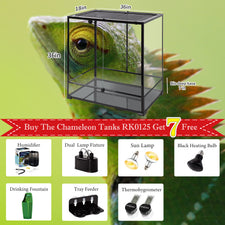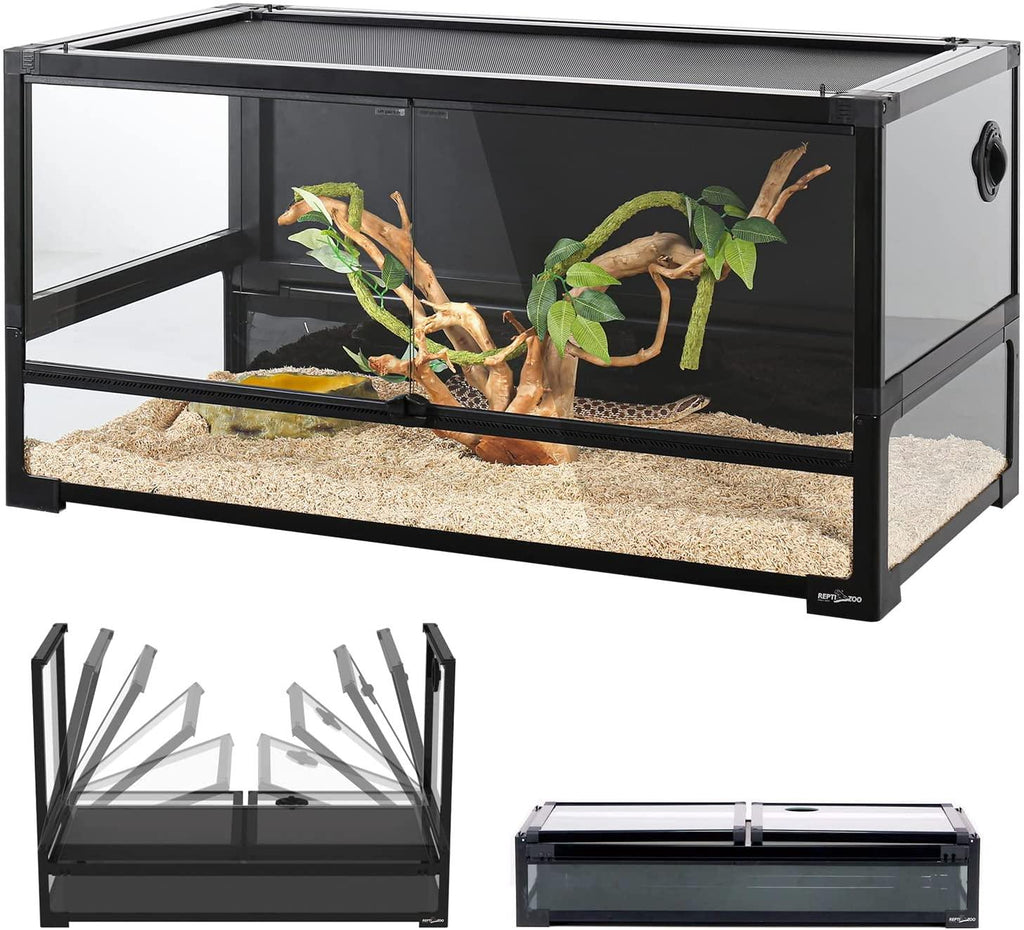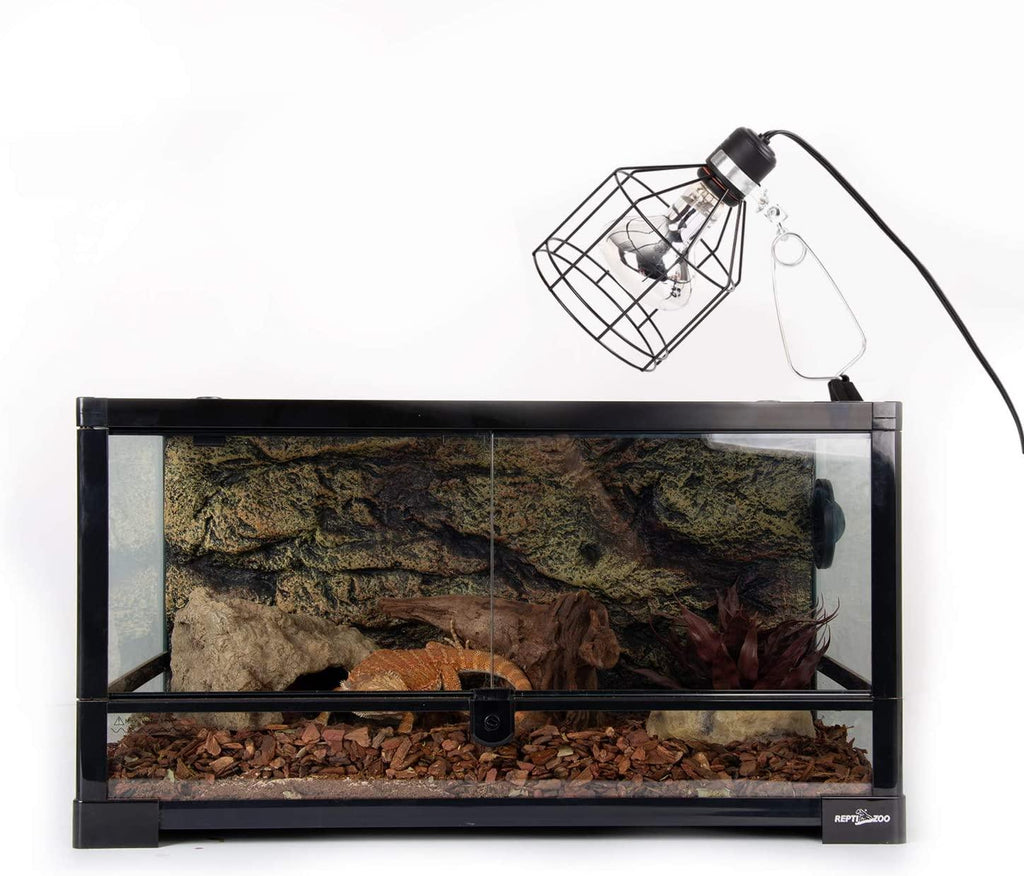Pets make our lives simply amazing. Be it dogs, cats, parrots, or even reptiles. When we talk of reptiles, some of you may be fond of ball pythons, geckos, and others. There's another adorable reptile pet, often less mentioned - the Kenyan Sand Boa.
Primarily native to Kenya and East African regions, these creatures possess an exceptional curiosity that attracts you towards them. If you are fond of reptiles and wish to bring a Kenyan Sand Boa home, this page is just for you.
In this article, we cover everything you need to nurture your reptile pet - their characteristics, important facts on their housing or enclosures, information on heating, lighting and humidity requirements, shedding, breeding, diet and water needs, health issues, treatment, and more.
Let’s get started.
Kenyan Sand Boa - Major Characteristics
Easy to identify by genders
As Kenyan Sand Boas exhibit sexual dimorphism, they are easily recognizable as males or females.
Active burrowers
Sand boas love spending their time underground and often live in burrows, with heads lifted, ready to catch the prey.
Length
Male sand boas are usually 18-24 inches long, while their female counterparts range from 28-35 inches.
Size
These reptiles are characterized by heavy bodies, small eyes, and a short tail. They are yellow or orange with dark brown spots.
Life span
Under proper care, a Kenyan Sand Boa can live up to 30 years!
Kenyan Sand Boa - Key Requirements for Healthy Growth and Development
Snake Housing/Enclosures
In Kenyan Sand Boas, a fact worth noting is that the females are much larger than males. That said, a male boa, however, enjoys an equally large-sized enclosure. This is primarily because these creatures are extremely active and curious to explore their habitat. Ideally, go for at least a 10-gallon aquarium or an enclosure with 36x18x18 inches dimensions that will work for both adults and juveniles.
Alternatively, plastic storage containers with appropriate air holes for ventilation also suffice. Remember, while the Kenyan sand boa spends most of its time in burrows, never presume them to be dormant reptiles. They are exceptionally agile and quick at times, which makes it necessary to use containers with tight lids. They aren't fond of climbing, so a horizontal enclosure serves the purpose rather than a vertical reptile tank.
Using a substrate in your pet’s enclosure is always good. The best part is sand boas don’t necessarily need sand as a substrate. You can try other options like - coconut mulch, aspen layering, or newspapers. However, if you plan to use sand, make sure it is well-washed and safe, unlike desert sand, which contains silica and other chemicals that can cause harm to your pet.
Snake Decor
Always keep in mind that your dear Kenyan sand boa loves burrowing. They enjoy hiding, going deep, or squeezing beneath the substrates. To create a naturalistic habitat, go for cork bark or lightweight materials. They are curious climbers but prefer burrowing and hiding places. While you can make some branches or climbers in your reptile decor, avoid keeping rocks or hard objects as they may hurt your boa.
Hiding places are a great way to amaze your reptile pal. If you don’t provide these, your reptile friend will still sneak underneath the newspaper or substrates.
Information on keeping your Kenyan Sand Boa’s enclosure clean
The good news is that keeping your sand boa’s habitat clean is very simple. Check out some facts to understand why with related guidelines.
- Kenyan Sand Boas produce their uric acid as solid masses.
- Their excreta is dry and odorless.
- Clean the humidity box every week or two weeks.
- If the moist box contains moss molds, clean them immediately.
- If you find any lumps, throw them away.
- Replace the substrate and clean the enclosure 2-3 times a year
- Use disinfectant like 10% bleach solution and allow it to remain on the surfaces for 10 minutes.
- Remove all objects in the enclosure and wipe them with a paper towel until dry.
- Avoid using disinfectants like Pine Sol as they contain toxic ingredients.
Humidity Needs
While Kenyan Sand Boas are found in deserts, they are burrow-lovers and prefer spending time on damp and cool grounds. In enclosures, they need a humidity of roughly 60%-80%. Otherwise, they face severe shedding issues, a major health concern.
Besides using a substrate, you can use moist sprays to dampen your pet’s surroundings or place a moist hide box containing sphagnum moss.
Ideally, use a hygrometer to measure and monitor the humidity levels in the boa’s habitat.
Heating Needs
Wild sand boas insulate their bodies from the sun’s heat, so your Kenyan Sand Boa pet will preferably need 72-80 degrees F. Nevertheless, your pet’s enclosure must be capable of providing basking spots that peak at temperatures of 95 degrees F, as that will help the Boa regulate its body temperature.
If you use plastic containers to keep your pet, try using different varieties of heat cables where temperatures are controlled with a thermostat. In the case of a terrarium, you get the option to place an underneath heating pad on one side. A thermostat will help maintain a higher temperature, like 95 degrees F.
Alternatively, if you use a container with a lid, an overhead incandescent lamp can be used on one side to keep the temperature warmer, while a cooler temperature of 70-80 degrees F can be maintained on the cooler side of the enclosure.
Lighting Needs
As the Kenyan climate offers excessive light, these creatures need high UV light to thrive. UV radiation helps keep your pets healthy and maintain the right dose of nutrients like Calcium, which aids in their metabolic processes. You can ensure this by placing a UV light near the basking platform, as heat from the area makes the process easier. For a 36-inch enclosure, place a 22-inch UV strip inside the enclosure at a safe distance from your pet.
Breeding Behaviors/Needs
Sand Boas reproduce well in captivity, making them ideal members for breeding. To get them to start mating, create a cool temperature in the enclosure for adult snakes. Make sure they have enough body weight before cooling; they usually don't eat during mating. As they need warmer temperatures to digest their food, you need to regulate the heat. Gradually, start offering the food and see how they respond.
It’s best to introduce male boas into female enclosures. That’s because the latter are kept in larger cages, so both get a wider room. Keep the mates together three days a week, separate them and provide food. Repeat this process for a few days and see the results. Sometimes, there’s evidence of courtship, but at times, you just see the reproduction without any mating!
If you find a male and female aren’t getting along, try introducing another male boa into the enclosure.
Shedding Behaviors/Needs
Kenyan Sand boas don’t eat when they shed. During the period of shedding, which usually lasts one to two weeks, feed them small meals. Avoid handling them much, as that causes stress. Shedding times are indicated by dull skin colors, which turn normal in a few days. Besides, their belly turns yellowish instead of white.
While they mostly shed in the evenings, you may place a cloth in the cage to ensure they shed later if the shedding wasn’t completely done earlier. Check the shed to see if they haven’t retained their eye caps. If they keep their eye caps for long without shedding, it can result in health issues. You can avoid such problems by placing a humidity box, which ensures there’s never a chance of a bad shed.
Kenyan Sand Boa - Diet and Water Requirements
While it’s equally important to offer a great habitat with appropriate humidity, heating, and lighting needs, the gravity of a balanced and rich diet can’t be overstated.
Check out some key points on the food and water requirements for a Kenyan Sand Boa.
- Feed them with pinkie mice, fuzzies, and small rodents.
- Other carnivorous diets like frogs, rabbits, or iguanas are good options
- Always remember that any food must not be wider than the widest part of your pet’s body
- Kenyan Sand Boas are nocturnal, so feed them at night
- Some new pets prefer eating live prey initially
- Never feed your pet in the cage as they may consume the substrate, resulting in their death
- Avoid feeding them with older mice, as these may injure your pal.
- Feed babies every 5-7 days; adults must be fed every week or month, depending on their size.
- Monitor your snake’s health and adjust the feeds accordingly
- Female adults must be fed moderately as they get obese if overfed, which shortens their life span.
- Never unnecessarily handle your boa within 24 hours of feeding, as it will irritate its food pipe.
- Sometimes, your pet may refuse to eat, and this could be due to stress caused by excess handling
Make sure to always place a dish with fresh, cool water. Place a bowl with water at the cooler end if you use a covered tank.
Kenyan Sand Boa - Common Health Problems, Symptoms, Causes and Treatment
The most common health problems faced by Kenyan Sand Boa include dehydration and issues with shedding.
Health issues: Blister disease, mouth rot, respiratory problems
Symptoms: Bad smell near its mouth, boils over the body, etc.
Cause: Unclean or dirty tanks and enclosures
Treatment/Prevention: Consult a vet. Clean the enclosure regularly.
Health issue: Injuries
Symptoms: Scrapped skin or scratches/ lacerations on the tongue
Cause: Hurt by live prey or injury while trying to escape the tank
Treatment: Consult a vet.
Health issue: Dehydration and shedding problems
Symptoms: viscous saliva strands, coarse and flaky scales, refusal to eat, etc.
Cause: lack of adequate humidity levels in the tanks
Treatment/Prevention: Keep a moist hide box, dampen the soil regularly, and use a hygrometer to check the humidity levels.
Wrapping Up
Kenyan Sand Boas are amazing pets that make your life beautiful. Make sure you take the best care of your sand boa and meet all its requirements. Hope this article will help you in every way to nurture your new reptile pal while enjoying a nice time together.












